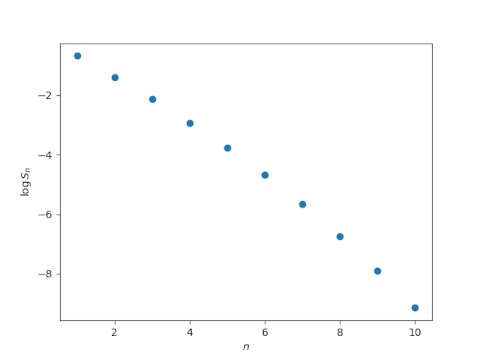Newton’s inequality and log concave sequences
by John from John D. Cook on (#6FFDN)
The previous post mentioned Newton's inequality. This post will explore this inequality.
Let x be a list of real numbers and define Sn(x) to be the average over all products of n elements from x. Newton's inequality says that
Sn-1 Sn+1 S^2n
In more terminology more recent than Newton, we say that the sequence Sn is log-concave.
The name comes from the fact that if the elements of x are positive, and hence the Ss are positive, we can take the logarithm of both sides of the inequality and have
(log Sn-1 + log Sn+1)/2 log Sn
which is the discrete analog of saying log Sk is concave as a function of k.
Let's illustrate this with some Python code.
from itertools import combinations as Cfrom numpy import randomfrom math import combimport matplotlib.pyplot as pltdef S(x, n): p = lambda c: prod([t for t in c]) return sum(p(c) for c in C(x, n))/comb(N, n)random.seed(20231010)N = 10xs = random.random(N)ns = range(1, N+1)ys = [log(S(xs, n)) for n in ns]plt.plot(ns, ys, 'o')plt.xlabel(r"$n$")plt.ylabel(r"$\log S_n$")plt.show()
This produces the following plot.

This plot looks nearly linear. It's plausible that it's concave.
The post Newton's inequality and log concave sequences first appeared on John D. Cook.